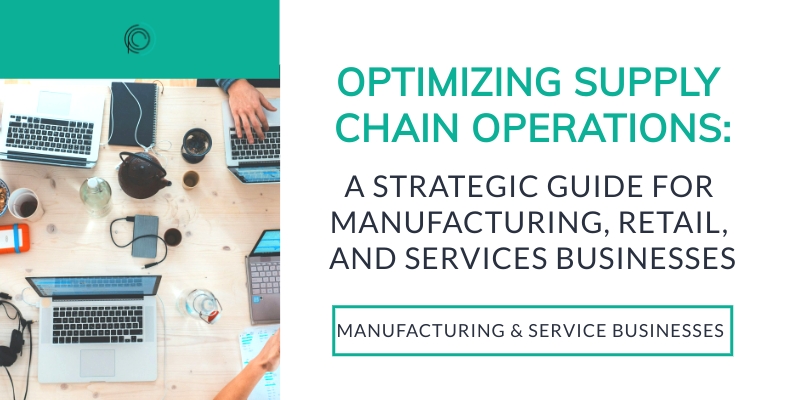From Insight to Action: Leveraging Demand Forecasting for Supply Chain Resilience
The supply chain serves as the critical infrastructure for any business, playing a pivotal role in the seamless execution of production, transportation, and distribution of goods and services to consumers across the globe. It forms the foundation upon which businesses operate, ensuring that products move efficiently from factories to warehouses to the end consumer. Even businesses that primarily offer services find themselves dependent on the supply chain, albeit indirectly, for the delivery of the physical components that support their service delivery.
A well-oiled supply chain is not just beneficial but essential for achieving business success, especially for companies dealing in tangible products. In the fast-paced world of commerce, where consumer preferences change rapidly and market dynamics can shift overnight, having a resilient and responsive supply chain can mean the difference between thriving and merely surviving. This is where the art and science of demand forecasting come into play.
Demand forecasting, the process of estimating the future demand for a company’s products, is a cornerstone of effective supply chain management. By accurately predicting future consumer demand, businesses can make informed decisions about production levels, inventory management, and distribution strategies, thereby reducing waste, optimizing costs, and improving customer satisfaction.
In this blog post, we’ll explore in greater detail the intricate world of demand forecasting. We’ll examine its various components, from statistical analysis and trend evaluation to the use of cutting-edge AI technologies for improving accuracy. We’ll also discuss practical strategies supply chain leaders can employ to leverage demand forecasting as a tool for driving business success, ensuring that they can meet their customers’ needs efficiently and effectively.
What is Demand Forecasting? As previously mentioned, demand forecasting refers to the analytical process used to predict future customer demand for a product or service. This prediction is based on a careful analysis of historical sales data, prevailing market trends, customer behavior patterns, and a variety of other pertinent factors. The ultimate goal of demand forecasting is to produce a well-informed estimate of the quantity of goods that consumers are expected to purchase within a specific timeframe.
Demand planners and analysts utilize this crucial information to project future sales volumes, which in turn, significantly aids in making more precise financial projections and capacity planning decisions. By accurately forecasting demand, businesses can achieve a delicate balance: ensuring that inventory levels are sufficiently stocked to satisfy customer demand without the risk of accumulating excess inventory, which can tie up capital and increase storage costs.
Effective demand forecasting enables companies to optimize their inventory levels, thereby reducing the risk of stockouts and excess inventory. This optimization ensures that businesses can meet their customers’ needs promptly and efficiently, leading to higher customer satisfaction and potentially increased profitability.
Importance of Demand Forecasting in Supply Chain Management
Demand forecasting is an essential component in the realm of supply chain management, acting as the backbone for strategic planning and operations. Its significance cannot be overstated, as it empowers businesses to align their production and inventory with anticipated market demands. This alignment is crucial for enhancing customer satisfaction by ensuring the right products are available at the right time.
Beyond meeting customer expectations, accurate demand forecasting plays a pivotal role in financial planning. It enables businesses to reduce inventory costs significantly by avoiding overstocking or understocking, leading to increased revenue and improved profitability. The ability to predict market demand accurately allows companies to streamline their operations, optimizing resource allocation to match production with demand.
Furthermore, effective demand forecasting facilitates better supplier relationships by providing more accurate production schedules, which leads to more efficient production and transportation processes. This efficiency not only minimizes waste but also reduces costs associated with production, transportation, and storage. By anticipating demand trends, businesses can make strategic decisions about product development, market expansion, and promotional strategies, ensuring they stay ahead of the competition.
Demand forecasting is a cornerstone of successful supply chain management. It offers a myriad of benefits, from enhancing customer satisfaction to improving a company’s bottom line. By leveraging accurate demand forecasts, businesses can strategically position themselves to meet market demands efficiently and effectively, ensuring long-term success and sustainability.
Methods of Demand Forecasting
Demand forecasting plays a crucial role in streamlining supply chain management by predicting future customer demand. To achieve accurate forecasting, it’s important to choose the appropriate method based on the specific needs of the business.
Among the various methods available, qualitative forecasting stands out for its reliance on expert opinions and market insights, making it particularly useful for short-term predictions when quantitative data is scarce. This approach often involves gathering input from seasoned professionals within the industry or conducting market surveys to gauge consumer sentiment.
On the other hand, time series analysis offers a more data-driven approach by examining historical demand patterns to forecast future needs. This method assumes that past trends are good indicators of future performance, making it highly effective for businesses with access to comprehensive sales data across multiple periods.
Causal forecasting goes a step further by analyzing not just historical data, but also identifying the factors that cause fluctuations in demand. This could include economic indicators, competitor actions, or changes in consumer preferences. By understanding these underlying causes, businesses can make more informed predictions about future demand.
Each of these methods has its own set of advantages and is suited to different forecasting scenarios. By selecting the most appropriate method, businesses can ensure efficient inventory management, optimize their supply chain operations, and better meet their customers’ needs.
Challenges of Demand Forecasting
Despite the numerous advantages that demand forecasting brings to businesses, mastering this process is far from straightforward. Numerous challenges accompany it, making it a complex task to navigate. One of the most daunting aspects is ensuring the accuracy of the forecasts themselves. Misjudged forecasts can lead businesses into troublesome territories, such as overstocking, where they are left with more goods than demanded, or stockouts, where they don’t have enough to meet demand. Both scenarios can lead to significant revenue loss and customer dissatisfaction, tarnishing a brand’s reputation.
Moreover, the task of forecasting is complicated by external factors that can be difficult, if not impossible, to predict with high accuracy. Weather conditions, for instance, can drastically affect consumer demand in ways businesses may not anticipate. Economic trends, shifts in market dynamics, and unforeseen events like natural disasters or global pandemics can further skew demand, posing additional challenges to creating accurate forecasts. These elements underscore the complexity of demand forecasting and highlight the need for businesses to develop sophisticated approaches to mitigate risks and capitalize on potential opportunities.
Improving Demand Forecasting
To enhance demand forecasting accuracy, supply chain executives must consider investing in advanced technologies such as artificial intelligence (AI) and machine learning. These technologies possess the capability to analyze vast amounts of data more efficiently than traditional methods, providing insights that can lead to more precise and dependable forecasts.
In addition to leveraging technology, it is equally important for businesses to foster collaboration among all stakeholders in the supply chain. This includes not only suppliers and manufacturers but also distributors and even customers. By sharing information and insights across these groups, companies can gain a more holistic understanding of demand patterns, which can further refine forecasting accuracy.
Moreover, given the dynamic nature of markets today, it’s imperative to regularly revisit and update demand forecasts. This practice should not be seen as a one-time task but rather an ongoing process that adapts to new market trends, consumer behaviors, and other external factors. Implementing a continuous feedback loop where forecasts are constantly adjusted based on real-world outcomes and lessons learned can significantly enhance the resilience and responsiveness of the supply chain.
By adopting these strategies, businesses can not only improve their demand forecasting but also position themselves to respond more effectively to market changes, thus ensuring a competitive edge in their respective industries.
Demand forecasting stands as a cornerstone for effective supply chain management, playing a crucial role in enabling businesses to navigate the complexities of the market. By anticipating future demand accurately, companies can make strategic decisions that optimize their resource allocation, streamline operations, and significantly enhance their market responsiveness. The process of demand forecasting, however, presents a myriad of challenges that demand meticulous attention. Demand planners are tasked with selecting the most appropriate forecasting method from a plethora of options, each with its own set of considerations and applicability to different market scenarios. Additionally, investing in the latest technology and analytical tools is no longer a luxury but a necessity for achieving precise forecasts. This technological integration not only facilitates the analysis of vast datasets but also enhances the accuracy of predictions, thereby supporting more robust decision-making frameworks.
Collaboration emerges as another critical element in the demand forecasting process. It involves a harmonious partnership between various stakeholders, including suppliers, distributors, and customers, to share insights and data that enrich the forecasting model. Such collaborative efforts are instrumental in creating a comprehensive view of demand patterns, significantly reducing the risks of overproduction or understocking.
The benefits of effective demand forecasting are manifold. By aligning production schedules with market demand, businesses can significantly reduce their inventory and production costs, while simultaneously increasing revenue through improved product availability. Moreover, the ability to meet customer demands promptly and efficiently plays a pivotal role in enhancing customer satisfaction and loyalty, thereby fostering a competitive edge in the market.
Supply chain leaders who recognize the strategic value of demand forecasting and are willing to invest in its continuous improvement gain a substantial advantage over their competitors. These leaders understand that demand forecasting is not just about predicting the future but about creating a proactive, responsive supply chain that can adapt to changes and seize opportunities.
Book a consultation with one of our Supply Chain experts today, and let us guide you in setting up a robust demand forecasting system for your business. With our expertise, you can unlock the full potential of your supply chain, ensuring that your business is not just prepared for the future but is also poised to lead the market.







